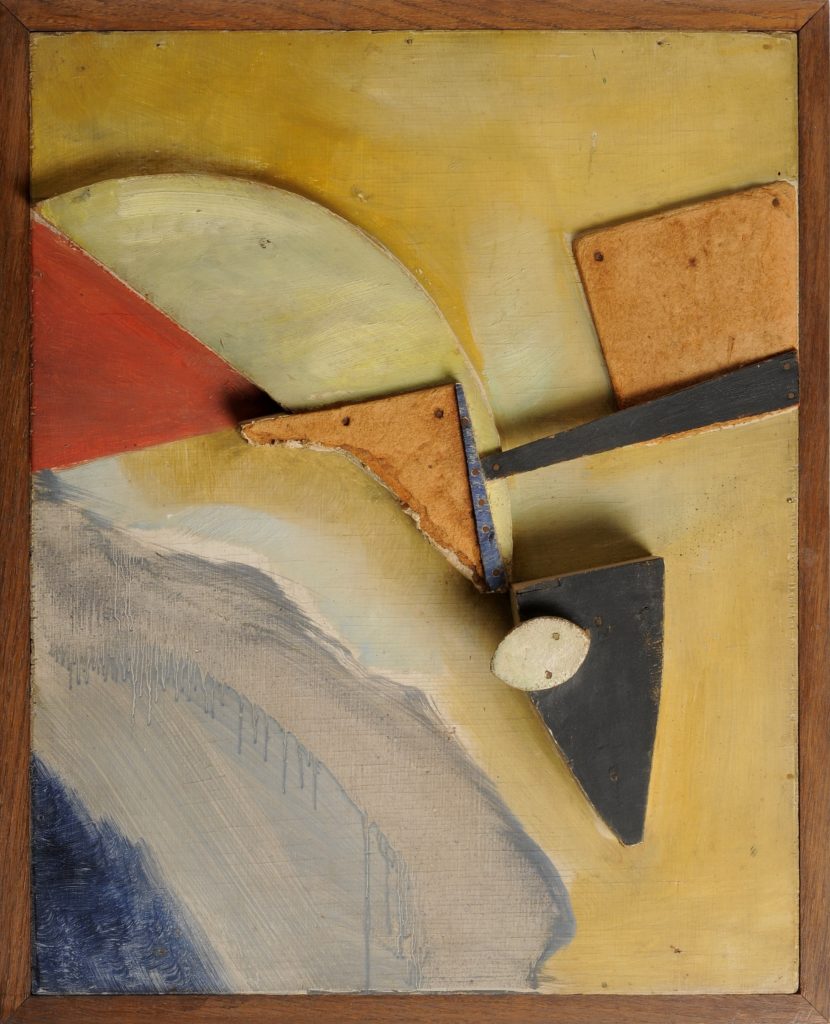No title (Painting with a half moon)

Kurt Schwitters (1887-1948) belongs to the international avant-garde of the early 1900s and was loosely connected to the Dada movement. He was one of the first to work with collage and material pictures and had a great influence on later generations of artists who worked within experimental movements such as performance, happenings, Fluxus, etc.
Upon the enthusiastic recommendation of friend and colleague Hannah Höch, Schwitters travelled with his wife to Norway in 1929. They took a cruise along the Norwegian coast as far north as Svalbard, and both became enchanted with Western Norway’s exuberant and imposing nature. In the coming years they returned several times, and spent considerable time at Hjertøya outside of Molde in particular.
Due to the tense situation in Germany the family even decided to escape to Norway in 1937, and settled down at Lysaker on the outskirts of Oslo. They remained here for three years until the German invasion, which forced them to flee one again. This time to Great Britain.
As far as can be ascertained, Schwitters created Untitled (Picture with a Half Moon) during one of their stays at Hjertøya. The work was created during the period 1934 – 37 and its first proprietor was Per Vassbotn, a local drawing instructor in Molde, who most likely received it as a gift from the artist. The picture has since been in the possession of Swedish, Danish and English owners, until it was incorporated in the Savings Bank Foundation’s art collection.
In this work Schwitters carries on the experimental and innovative style comprised of found objects and the simple materials he worked with during the 1920s, yet the idiom has now become “richer” and the composition is not as stringent as in the earlier works. The palette is sober and the colours are elegantly harmonised with each other, yet still muster hints of expressiveness in the sections with dripping paint.
Untitled (Picture with a Half Moon) is far from characteristic of the pictures that Schwitters created in Norway. Although he continued to work with collage – which this work is a good example of – the majority of the paintings are far more traditional. Partly inspired by the magnificent nature of Western Norway, and partly due to economic circumstances, he created many conventional landscapes and a fair number of portraits that were relatively easy to sell. It is not without reason that these works have posthumously been considered as a less interesting part of Schwitters’ production, though they of course have innate value and significance in a Norwegian context.
OWG